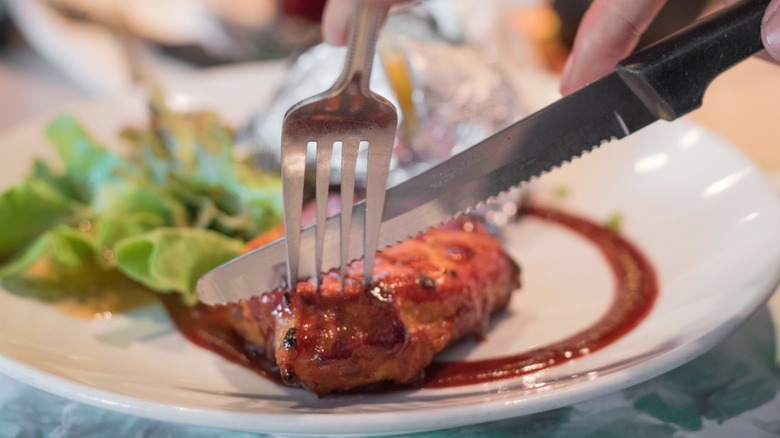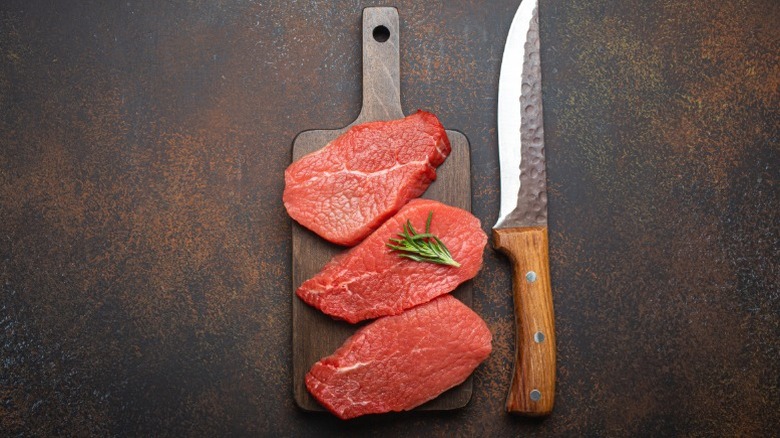Does A Steak Knife Need To Be Serrated?
One of the best parts of eating dinner at one of the good steakhouse chains or independent restaurants comes right before the main course, when the waiter sets out steak knives for everyone who ordered a hearty slab of beef. It builds anticipation for the meal, of course. But it also lets you admire the beautiful simplicity of the steak knife: The beautiful handle, the blade shiny enough to show your reflection, and the serrated teeth as sharp and ravenous as your own.
But do steak knives have to be serrated? No, of course not. In fact, while a serrated steak knife can be handy (and certainly aesthetically pleasing), using one does have its drawbacks. The saw-like teeth of a serrated blade may be cool, but they're an absolute pain to sharpen (although you can sharpen serrated knives if you've got patience and the right tools). And if you're not using it on a steak — if you're tucking into a boneless, skinless chicken breast or a piece of lox-inspired baked salmon, say — a serrated knife can seriously mutilate your meat, hacking delicate cuts into ugly confetti.
All steak knives have benefits and drawbacks
A steak knife with a straight blade may lack the raw animal appeal of a serrated one, but it has its moments. It's much more versatile, and can be used on more tender cuts as well as heavy hitters like porterhouse or ribeye — two of the best cuts of steak for grilling. It is, after all, just a smaller chef's knife. Some diners may prefer the way it glides through the meat, whereas a serrated blade can sometimes feel like it's tearing the fibers. The trouble is that you have to sharpen straight blades frequently — although giving it a few swipes against a honer shouldn't be too much trouble.
But in the words of a certain girl in an Old El Paso commercial, "por que no los dos?" Yes, you can get knives that are mostly un-serrated except for the tip of the blade, giving you the best of both blades on just one handle — well, for the most part. Any amount of serration means that you can't sharpen it like a non-serrated one, requiring you to still go through the rather fussy process of sharpening a serrated blade. On the bright side, though, you don't have to sharpen it as often as a non-serrated blade. In the end, it just comes down to which type you prefer.

